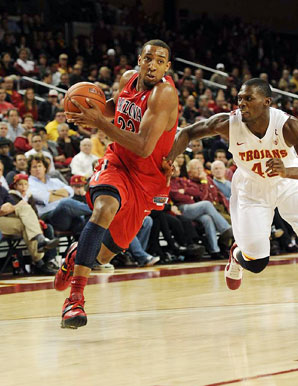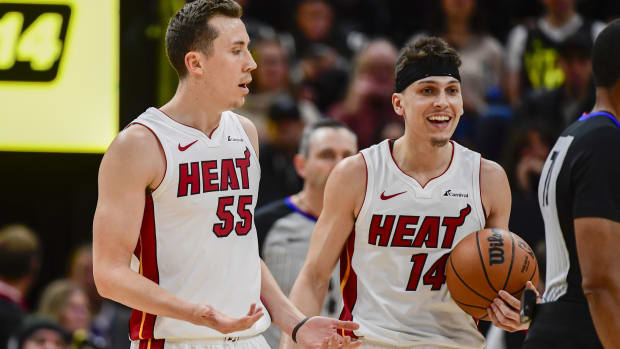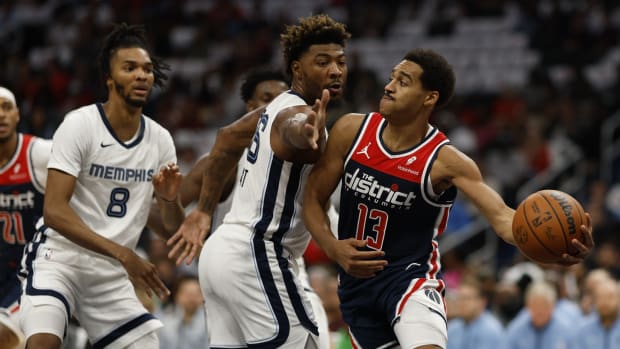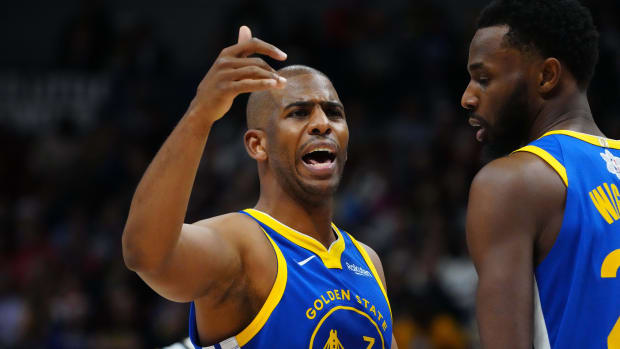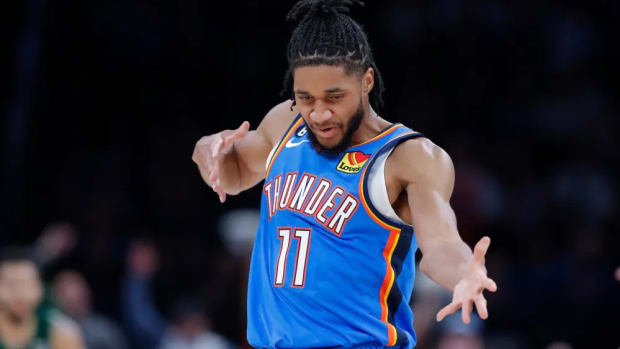Numbers reveal NBA draft's most complete player, biggest sleeper
Arizona's Derrick Williams is the most complete player available, and would be well worth trading for at No. 2 -- or even selecting ahead of Duke point guard Kyrie Irving at No. 1. Everyone knows that Williams is versatile; a search for his name and that adjective yields around 127,000 hits in Google. His standard stats make it clear he's an excellent scorer (19.5 points per game), rebounder (8.3 per game), three-point shooter (56.8 percent) and drawer of fouls (11.6 free-throw attempts per 40 minutes), but the hoops world may not realize the true degree of his versatility. The data in his Synergy file is stunning:
• The Wildcats loved to force opposing big men to guard Williams one-on-one outside the paint, and 12.3 percent of his offensive possessions were in isolation situations. Of players who had 50 isolation possessions on the season, Williams ranked third in the nation in efficiency, at 1.1299 points per possession. The only players ahead of him were Butler's Shelvin Mack, a 6-foot-3 combo guard, and Ohio State's David Lighty, a 6-5 wing. Williams is a 6-8 hybrid forward who could not be contained off the dribble. His ISOs resulted in free throws an amazing 29.9 percent of the time, which is by far the highest rate of any player who appeared in the top 50 in ISO efficiency.
• Williams was a better spot-up shooter than any other major-conference forward, at 1.3731 PPP. He stretched defenses, and opened up his ISO game because his shot needed to be respected from anywhere on the floor.
• He thrived as the roll man in pick-and-roll situations, too. They accounted for 11 percent of his offense, and he was more efficient than any other major-conference forward, at 1.3768 PPP.
• Williams is just as comfortable in the low post, ranking fourth among major-conference forwards in post efficiency, at 1.0645 PPP. The only players ahead of him last season were Kansas' Marcus Morris (whom Williams destroyed in a head-to-head matchup), Vanderbilt's Festus Ezeli and Cal's Harper Kamp. In post situations, Williams managed to draw fouls 37.1 percent of the time. In comparison, Ohio State's Jared Sullinger, the other first-team All-America forward, drew fouls on 21.0 percent of his post possessions.
To recap: Williams was the nation's most efficient forward in ISOs, spot-ups and pick-and-rolls, and was fourth-most efficient in the post. He really can do everything -- and the fact that he didn't truly break out as a star until this past season as a sophomore suggests he may be far from hitting his ceiling. I wouldn't want to be the GM who passed on him.
Hofstra's Charles Jenkins is the sleeper of this draft. The 6-3 senior is regarded as one of the country's best mid-major talents, and was the CAA's Player of the Year for two straight seasons, but few were aware of just how dominant of a scorer he really was. On numbers alone, he's more impressive than any other scoring guard who's in contention for the first round, because he offers the rare combination of high efficiency in both ISO and spot-up situations.
Here's how Jenkins' ISO and spot-up numbers compare with other elite combo or shooting guards in the 2011 draft pool:
Teams are falling in love with Providence's Marshon Brooks due to his physical attributes and workout performances, but Jenkins was a far more polished college scorer. His numbers may be inflated slightly by having played in the CAA, but the league was no slouch, having produced three NCAA tournament teams, including Final Four surprise VCU.
A further breakdown of Jenkins' 2010-11 numbers only bolsters his case as a high-value pick in the late first round, or early in the second. As the focal point of the Pride's offense, he was rarely left unattended -- 63.4 percent of his catch-and-shoot opportunities came with a man in his face -- yet showed an ability to make tough jumpers. His efficiency on guarded shots off the catch was 1.3898 PPP, which ranked 15th nationally among players with at least 50 such possessions. And while Jenkins shoots right-handed, he can go left off the dribble better than anyone in the draft: He had a national-best efficiency of 1.3261 PPP on left-hand drives, which he did 59 percent of the time.
Jenkins is also a rare master of the mid-range game, which has largely disappeared from college hoops as teams run offenses focused on threes and layups. At 1.2069 PPP, Jenkins was the most efficient mid-range player scorer in the nation last season; the runner up was Ohio State's William Buford -- who could be a 2012 first-rounder -- at 1.0333 PPP.
Jenkins' profile isn't perfect. He's older than most draft prospects, at 22, and has realized his potential. He's smaller than most NBA shooting guards and he's unlikely to transition into a pure-point role. He doesn't have the speed or the athleticism of some of the guards projected to go at the top of the first round. What he does know how to do is create shots off the dribble going in both directions, knock down shots with defenders attached to him and put up points in a highly efficient manner. He spent his college career outside of the major-conference spotlight, and never played in an NCAA tournament, but he's worthy of a guaranteed contract. His statistical resume is too strong to ignore.






























